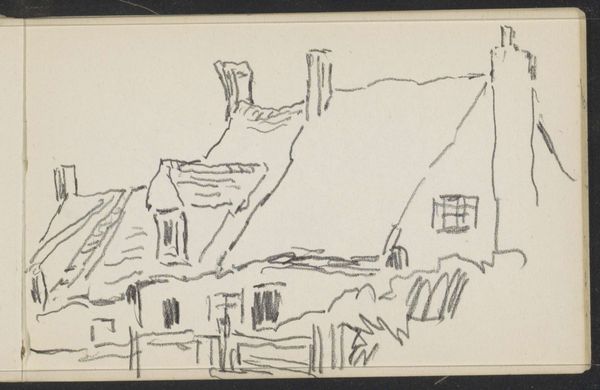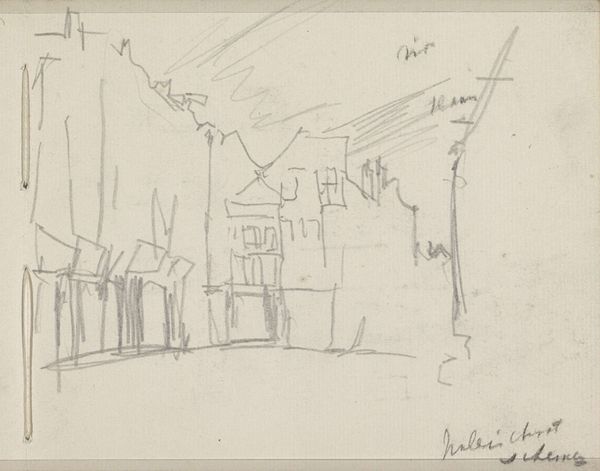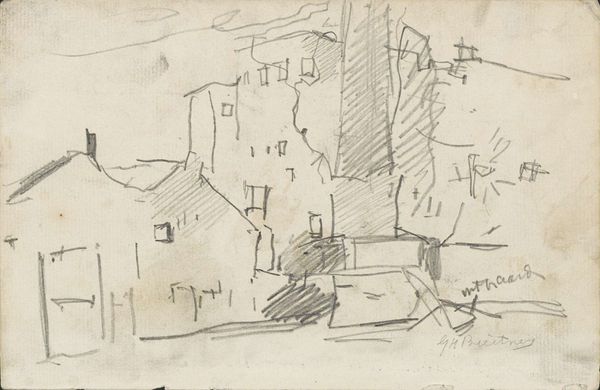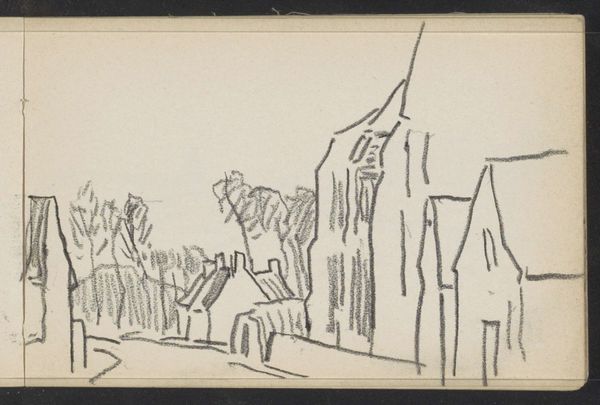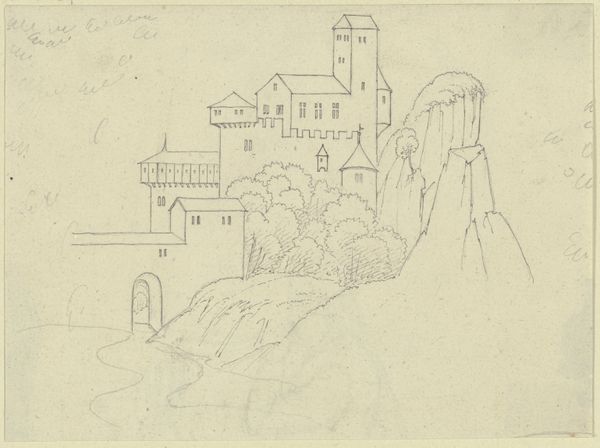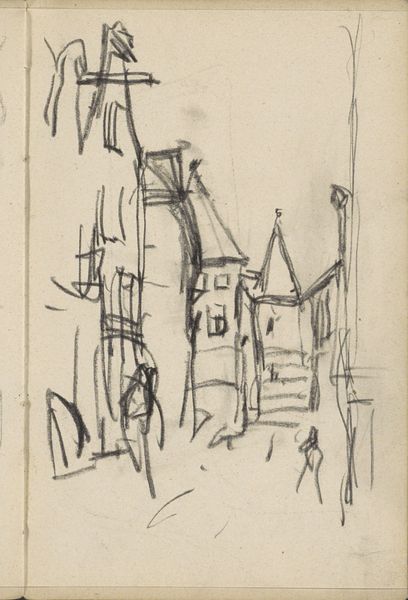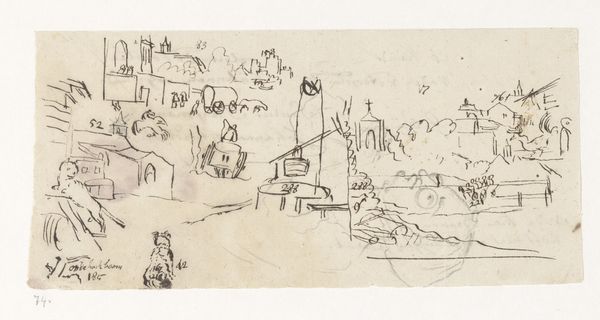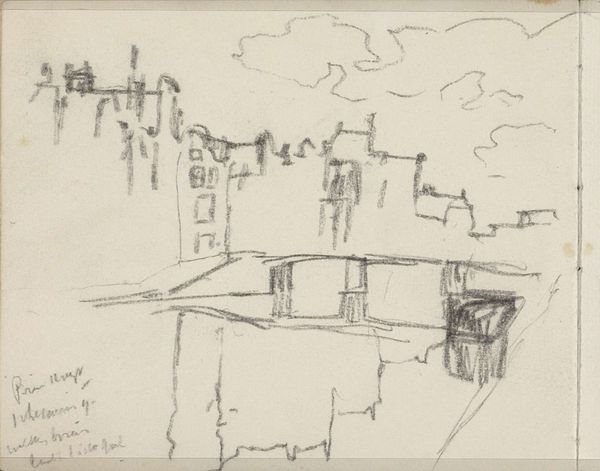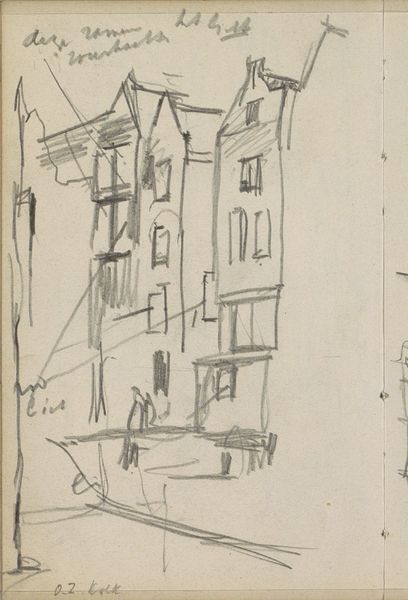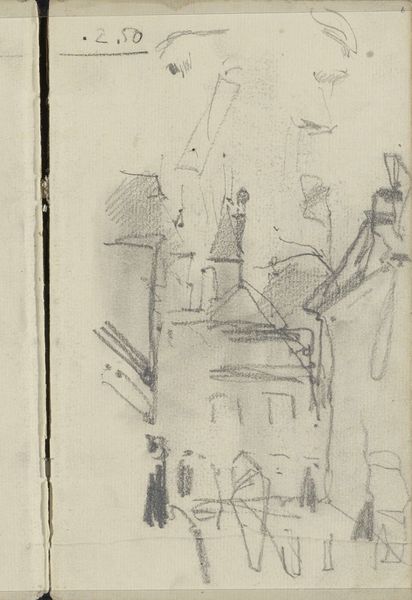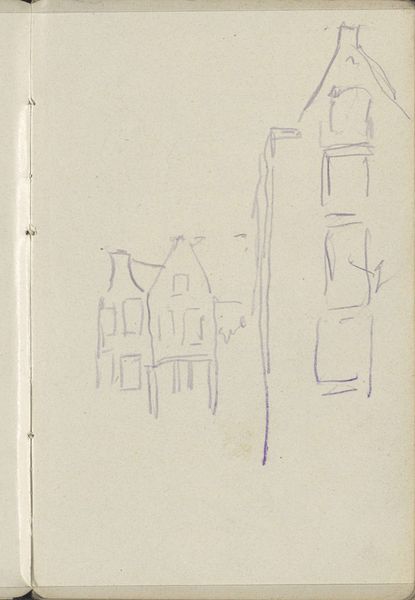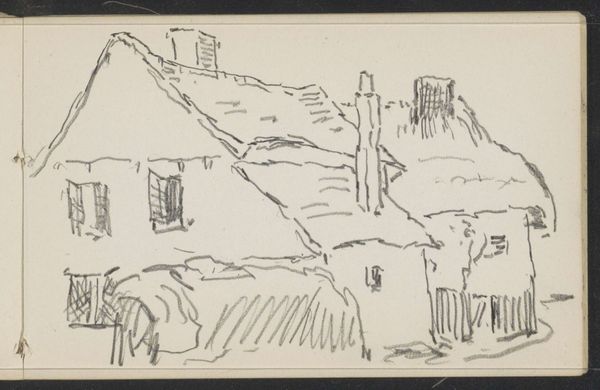
Gezicht op pakhuizen te Amsterdam, mogelijk op de Westelijke Eilanden 1912
0:00
0:00
georgehendrikbreitner
Rijksmuseum
drawing, pencil
#
drawing
#
dutch-golden-age
#
pen sketch
#
landscape
#
pencil
#
cityscape
#
realism
Dimensions: height 101 mm, width 160 mm
Copyright: Rijks Museum: Open Domain
Editor: Here we have George Hendrik Breitner’s 1912 drawing, "Gezicht op pakhuizen te Amsterdam, mogelijk op de Westelijke Eilanden," rendered in pencil. It’s a sketch of Amsterdam warehouses. I'm struck by the sketchiness of it. It feels very immediate and raw. What do you see in this piece? Curator: It's interesting you find it raw. I see Breitner engaging with the rapid urbanization of Amsterdam at the turn of the century. This sketch, rather than just being a quick study, hints at the societal shifts impacting the city’s identity. How do you think Breitner's choice of subject – warehouses rather than, say, grand civic buildings – reflects the changing perception of what constitutes 'worthy' subject matter in art? Editor: That's a great point! Focusing on warehouses… it’s definitely less celebratory and more about the everyday. Did this have to do with changing art institutions? Was the art world also transforming to value new perspectives, away from purely academic traditions? Curator: Absolutely! The rise of Realism and Impressionism challenged the established Salon system, which favored historical and mythological subjects. Artists began to find beauty and significance in modern, urban life, partly due to the changing patronage of art from aristocrats and the church towards the middle class and public museums. Were sketches like this made for exhibition or to make studies for larger work? Editor: Interesting! It could be for his eyes only? I am sure others made the same observation, then it makes more sense how museums became vital in promoting art appreciation in this new cultural landscape! It’s amazing how much a simple sketch can tell us. Thank you! Curator: Indeed. Understanding art requires a sensitivity to these layers of historical and social context. This work gives us a peak at Dutch societal progress through Breitner's interpretation.
Comments
No comments
Be the first to comment and join the conversation on the ultimate creative platform.
